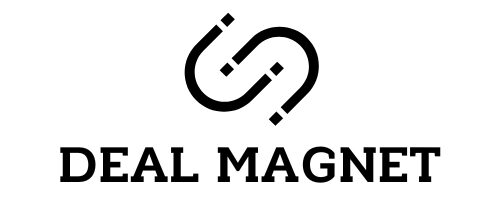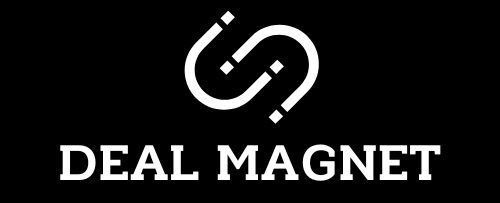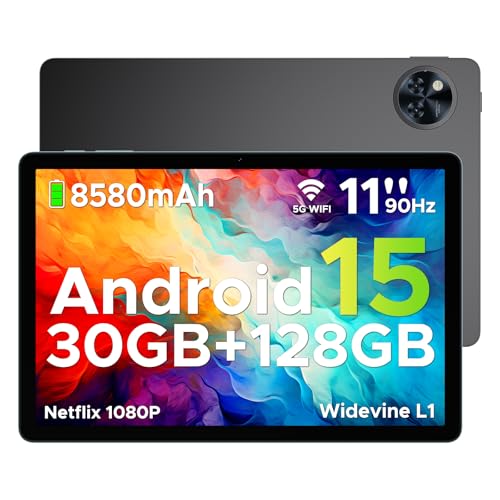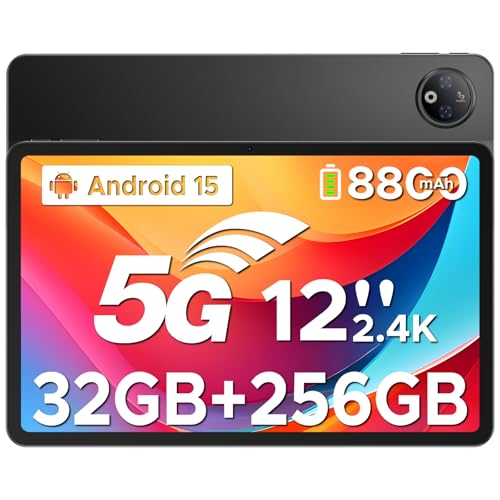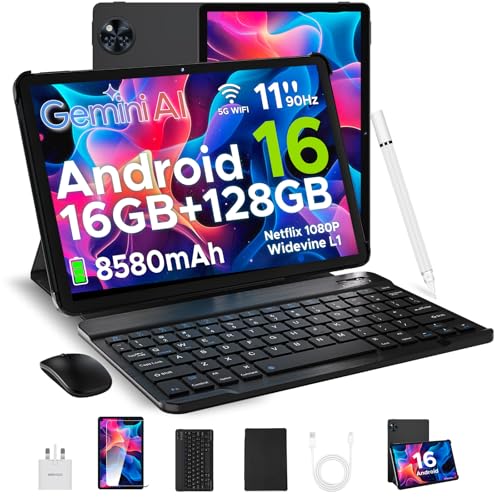“Dealmagnet.uk is a participant in the Amazon EU Associates Programme, an affiliate advertising programme designed to provide a means for sites to earn advertising fees by advertising and linking to Amazon.co.uk.”
Smart tablets have become one of the most versatile and practical devices of the modern era. Whether you’re a student, creative professional, business owner, or casual user, tablets offer the perfect blend of power, portability, and performance. From streaming movies and sketching artwork to managing business presentations, tablets fit seamlessly into nearly every lifestyle.
But with so many models, features, and specifications available, choosing the right smart tablet can be overwhelming. This detailed buying guide breaks down everything you need to know — from screen sizes and operating systems to battery life and performance — so you can make a confident and informed decision.
What to Consider Before Buying a Smart Tablet
Before making a purchase, it’s essential to know what you need from a tablet. Not all tablets are designed for the same purpose — some focus on entertainment, while others excel at productivity or creative work. Here are the main factors to consider before buying.
1. Operating System (OS)
The operating system determines how your tablet functions, which apps you can use, and how user-friendly your experience will be. There are three major types:
| Operating System | Best For | Key Advantages | Potential Drawbacks |
|---|---|---|---|
| Android | Customization, versatility, affordability | Wide range of apps, flexible settings | Can vary in quality between brands |
| iOS / iPadOS | Professionals, creatives, students | Smooth performance, strong ecosystem | More expensive, limited customization |
| Windows | Business users, multitaskers | Desktop-level productivity, supports PC apps | Slightly heavier and shorter battery life |
💡 Expert Tip: If you already use a specific ecosystem (like a Windows laptop or Android phone), choosing a compatible tablet will make file sharing and syncing easier.
2. Display Size and Resolution
Tablet screens typically range from 7 to 14 inches, depending on the purpose.
| Screen Size | Best For |
|---|---|
| 7–8 inches | Portability, eBook reading, kids |
| 9–11 inches | Balanced size for entertainment and work |
| 12–14 inches | Professional use, design, and multitasking |
Resolution and display quality also matter. Higher resolutions like Full HD or 2K ensure crisp visuals — especially if you use your tablet for streaming or creative design. If color accuracy is critical (e.g., photo editing), look for features like IPS panels or AMOLED screens.
3. Performance and Hardware Specifications
The performance of your tablet depends on several hardware factors:
- Processor (CPU): Determines overall speed and multitasking ability. Modern tablets often use octa-core processors for smooth performance.
- RAM: At least 4GB is recommended for casual use, while 8GB or more is ideal for gaming or professional apps.
- Storage:
- 64GB: Suitable for light users
- 128GB–256GB: For media-heavy users
- 512GB–1TB: For professionals and creators
- Expandable Storage: Some tablets support microSD cards for additional storage flexibility.
💡 Real Insight: Tablets with newer chipsets and more RAM handle heavy apps, multitasking, and gaming much more efficiently — especially when paired with high-refresh-rate displays.
4. Battery Life
Battery life is a key factor, particularly for travelers, students, or remote workers.
| Usage Type | Ideal Battery Life |
|---|---|
| Light use (reading, browsing) | 8–10 hours |
| Moderate use (streaming, video calls) | 10–12 hours |
| Heavy use (gaming, editing, multitasking) | 12–15 hours |
Charging Speed: Look for tablets with fast-charging support — a 30W or higher charger can save significant downtime.
🔋 Pro Tip: Battery longevity also depends on display brightness and app management, so keep power-saving features enabled for optimal performance.
5. Connectivity and Ports
Different tablets come with varying connectivity options. Here’s what to look for:
- Wi-Fi Only Tablets: Best for users who always have internet access nearby.
- Wi-Fi + Cellular Models: Ideal for travelers or field workers who need connectivity everywhere.
- Ports: USB-C ports are now the standard for faster data transfer and charging.
- Headphone Jack & Bluetooth: Essential for audio devices and accessories.
- Stylus & Keyboard Compatibility: Perfect for productivity and creative use.
💡 Expert Tip: If you plan to use your tablet for work, ensure it supports an external keyboard and stylus — these accessories can turn a tablet into a full productivity tool.
6. Camera Quality
While tablets aren’t primarily for photography, camera quality can matter for video calls, scanning documents, or creative work.
| Use Case | Front Camera | Rear Camera |
|---|---|---|
| Video calls | 5–8 MP | Not as important |
| Photography/Design | 8–13 MP | High-resolution required |
| Document scanning | 5 MP or higher | Autofocus preferred |
📸 Pro Tip: Focus more on front camera quality if you often attend online meetings or classes.
7. Build Quality and Portability
The physical design of a tablet impacts how comfortable it is to carry and use:
- Metal Bodies: Offer durability and a premium feel.
- Plastic Builds: Lightweight but less sturdy.
- Slim Bezels: Provide larger screen areas without increasing size.
- Weight: Ideally under 500g for handheld comfort.
If you frequently travel or use your tablet outdoors, prioritize lightweight models with scratch-resistant glass or protective cases.
8. Audio and Entertainment Features
Sound quality can make a big difference for media enthusiasts. Look for:
- Stereo speakers for immersive audio
- Dolby Atmos or enhanced sound modes
- 3.5mm audio jack or Bluetooth 5.0+ for external devices
🎧 Pro Tip: Pairing your tablet with quality wireless earbuds or speakers enhances the entertainment experience dramatically.
9. Price-to-Performance Ratio
When choosing a smart tablet, balance your needs with your budget.
| Price Range | Ideal For | Features |
|---|---|---|
| Budget ($100–$250) | Kids, students, casual users | Basic display, moderate battery life |
| Mid-Range ($250–$500) | Professionals, streamers | Better performance, multitasking |
| Premium ($500+) | Designers, gamers, business users | High-end display, stylus support, desktop-grade power |
💰 Expert Insight: Sometimes, mid-range tablets offer 80% of the performance of premium models — making them a smarter long-term investment.
Product Summary: Types of Smart Tablets
| Type | Best For | Pros | Cons |
|---|---|---|---|
| Compact Tablets (7–8″) | Reading, travel, children | Portable, affordable | Smaller screens, limited multitasking |
| Standard Tablets (9–11″) | Everyday entertainment | Balanced performance | Average cameras |
| Professional Tablets (12–14″) | Design, productivity | High performance, stylus support | Expensive, heavier |
| 2-in-1 Tablets | Work and study | Converts to laptop | May have shorter battery life |
Pros & Cons of Smart Tablets
Pros
- Highly portable and lightweight
- Great for reading, streaming, and browsing
- Supports note-taking, sketching, and productivity apps
- Long battery life compared to laptops
- Multiple price options for different users
Cons
- Smaller screens for heavy multitasking
- Some apps limited compared to desktop versions
- Accessories like stylus or keyboards sold separately
Who It’s Best For
| User Type | Recommended Tablet Type | Why It Works |
|---|---|---|
| Students | 9–11″ tablet with stylus support | Great for notes, online classes, and studying |
| Professionals | 12–14″ or 2-in-1 tablet | For multitasking, productivity, and presentations |
| Artists/Designers | High-resolution tablet with stylus | Accurate sketching and creative workflows |
| Gamers | High-performance tablet with powerful GPU | Smooth gameplay and visuals |
| Families | Budget tablet with parental controls | Ideal for kids and entertainment |
| Travelers | Lightweight compact tablet | Easy to carry, long-lasting battery |
FAQs
1. Can a tablet replace a laptop?
Yes, for most tasks like browsing, video calls, and document editing, tablets can easily replace laptops — especially if paired with a keyboard and stylus.
2. How much RAM do I need in a tablet?
For smooth performance, 4GB is the minimum. For gaming or creative apps, go for 8GB or more.
3. Are tablets good for students?
Absolutely. They’re lightweight, offer note-taking features, and support educational apps — perfect for both online and offline learning.
4. What’s the difference between a tablet and a 2-in-1 laptop?
A 2-in-1 offers a detachable or foldable keyboard and functions more like a laptop, while traditional tablets rely on touch or stylus input.
5. How do I protect my tablet?
Use a sturdy case, screen protector, and avoid overcharging. Regularly back up data to the cloud or external storage.
Final Recommendation
Choosing the right smart tablet depends on your goals and lifestyle.
- For entertainment and casual use: Go for a mid-sized tablet (9–11″) with Full HD display and decent storage.
- For productivity and creativity: A 2-in-1 tablet with stylus and keyboard support provides the best versatility.
- For travel and reading: Compact tablets with long battery life are ideal companions.
Ultimately, a smart tablet is not just a device — it’s a tool that enhances how you learn, create, and connect.
Latest Posts
- Breathe Easy: Your Complete Dehumidifier Buying GuideAROEVE Dehumidifier 1000ml, Dehumidifiers for Home, Auto Off, Auto Defrost, Peltier Technology, Coloured Light, Portable, Quiet, for Wardrobe, Bedroom, Bathroom “Dealmagnet.uk is a participant in the Amazon EU Associates Programme, an affiliate advertising programme designed to provide a means for sites to earn advertising fees by advertising and linking to Amazon.co.uk.” Humidity may be invisible,… Read more: Breathe Easy: Your Complete Dehumidifier Buying Guide
- Freedom to Clean: Your Ultimate Cordless Vacuum Buying GuideCordless Vacuum Cleaner,Stick Vacuum 45KPA/450W/60min,Wall-mounted Charging/V-shaped Anti-Tangle,with Self-standing Function and Removable Battery,Vacuum Cleaner for Pet Hair,Carpets and Hard Floors Ultenic T10 Lite Robot Vacuum Cleaner with Mop 5000Pa, 15min Lidar Quick Mapping, Self Charging & Emptying, Allergy Friendly, Carpet Auto-boost,Siri/Alexa/APP Remote Control Hoover for Floors Pet Hair Cordless Vacuum Cleaner 48KPa/550W/65min,Stick Vacuum Cleaner with Anti-Tangle… Read more: Freedom to Clean: Your Ultimate Cordless Vacuum Buying Guide
- Smart Choice: The Ultimate Smart Tablet Buying GuideDOOGEE TAB A9+ 2025 Newest 11 Inch Android 15 Tablet, 8580mAh Tablet With Keyboard, T7200 Octa Core Android Tablets, 20GB + 64GB/2TB Tablets With Pen, 13+5MP, 2 Speakers + Widevine L1, Mouse & Case DOOGEE U11 PRO Android Tablets, 30GB RAM + 256GB ROM/2TB, Unisoc T7200 Octa-Core 11 Inch Tablet, 8580mAh Large Battery, 90Hz IPS… Read more: Smart Choice: The Ultimate Smart Tablet Buying Guide
- Data on Demand: The Ultimate Hard Drive Buying Guide
 Aiolo Innovation 500GB Ultra Slim Portable External Hard Drive HDD-USB 3.0 for PC, Mac, Laptop, PS4, Xbox one,Xbox 363-Super Fast Transmission “Dealmagnet.uk is a participant in the Amazon EU Associates Programme, an affiliate advertising programme designed to provide a means for sites to earn advertising fees by advertising and linking to Amazon.co.uk.” In today’s digital… Read more: Data on Demand: The Ultimate Hard Drive Buying Guide
Aiolo Innovation 500GB Ultra Slim Portable External Hard Drive HDD-USB 3.0 for PC, Mac, Laptop, PS4, Xbox one,Xbox 363-Super Fast Transmission “Dealmagnet.uk is a participant in the Amazon EU Associates Programme, an affiliate advertising programme designed to provide a means for sites to earn advertising fees by advertising and linking to Amazon.co.uk.” In today’s digital… Read more: Data on Demand: The Ultimate Hard Drive Buying Guide - Power Up Smartly: Ultimate Charger & Battery Buying Guide
 Battery Charger Compatible with Dewalt 12V/20V Battery, 2-Ports Fast Charger Compatible with Dewalt DCB 203 204 205 206 201 120 127 Lithium Battery “Dealmagnet.uk is a participant in the Amazon EU Associates Programme, an affiliate advertising programme designed to provide a means for sites to earn advertising fees by advertising and linking to Amazon.co.uk.” From… Read more: Power Up Smartly: Ultimate Charger & Battery Buying Guide
Battery Charger Compatible with Dewalt 12V/20V Battery, 2-Ports Fast Charger Compatible with Dewalt DCB 203 204 205 206 201 120 127 Lithium Battery “Dealmagnet.uk is a participant in the Amazon EU Associates Programme, an affiliate advertising programme designed to provide a means for sites to earn advertising fees by advertising and linking to Amazon.co.uk.” From… Read more: Power Up Smartly: Ultimate Charger & Battery Buying Guide - Perfect Finish Every Time: Ultimate Paint Sprayer Buying Guide
 YIREAL Fence Paint Sprayer 800W,Electric Spray Paint Gun with 1300ml Container 3 Meters Cable 1.8M Hose,HVLP Spray Gun with 3 Nozzles 3 Spray Modes for Walls Ceilings Sheds Furniture House Painting “Dealmagnet.uk is a participant in the Amazon EU Associates Programme, an affiliate advertising programme designed to provide a means for sites to earn advertising… Read more: Perfect Finish Every Time: Ultimate Paint Sprayer Buying Guide
YIREAL Fence Paint Sprayer 800W,Electric Spray Paint Gun with 1300ml Container 3 Meters Cable 1.8M Hose,HVLP Spray Gun with 3 Nozzles 3 Spray Modes for Walls Ceilings Sheds Furniture House Painting “Dealmagnet.uk is a participant in the Amazon EU Associates Programme, an affiliate advertising programme designed to provide a means for sites to earn advertising… Read more: Perfect Finish Every Time: Ultimate Paint Sprayer Buying Guide - Sound Without Strings: Buying Guide for Wireless Earbuds & Earphones
 Niderson Wireless Earbuds, Headphones with Screen Stereo Bass, 48Hrs Playtime, Red Niderson Wireless Earbuds, Headphones with Screen Stereo Bass, 48Hrs Playtime, Grey Niderson Open Ear Wireless Earbuds Bluetooth Headphones, Grey Ear Buds for Fitness/Workouts/Travel “Dealmagnet.uk is a participant in the Amazon EU Associates Programme, an affiliate advertising programme designed to provide a means for sites… Read more: Sound Without Strings: Buying Guide for Wireless Earbuds & Earphones
Niderson Wireless Earbuds, Headphones with Screen Stereo Bass, 48Hrs Playtime, Red Niderson Wireless Earbuds, Headphones with Screen Stereo Bass, 48Hrs Playtime, Grey Niderson Open Ear Wireless Earbuds Bluetooth Headphones, Grey Ear Buds for Fitness/Workouts/Travel “Dealmagnet.uk is a participant in the Amazon EU Associates Programme, an affiliate advertising programme designed to provide a means for sites… Read more: Sound Without Strings: Buying Guide for Wireless Earbuds & Earphones - Smart Connections:Buying Guide for Adapters & Extensions
 AUNNO Double Shaver Plug Adaptor UK, 2500W 2 Way Plug Adapter for Bathroom Electric Razor and Electric Toothbrush etc, 2 Pin to 3 Pin Plug Adapter with 10A Fuse AUNNO Pack of 2 UK to European Plug Adapter, UK 3 Pin to European 2 Pin Plug Converter, Euro Type C, E, F and Type G,… Read more: Smart Connections:Buying Guide for Adapters & Extensions
AUNNO Double Shaver Plug Adaptor UK, 2500W 2 Way Plug Adapter for Bathroom Electric Razor and Electric Toothbrush etc, 2 Pin to 3 Pin Plug Adapter with 10A Fuse AUNNO Pack of 2 UK to European Plug Adapter, UK 3 Pin to European 2 Pin Plug Converter, Euro Type C, E, F and Type G,… Read more: Smart Connections:Buying Guide for Adapters & Extensions - Clean Smarter: The Ultimate Vacuum Cleaner Buying Guide
 Ultenic U15 Cordless Vacuum Cleaner 50000Pa/65Min Runtime, Anti-tangle Brush with GreenEye Technology, Self Standing Stick Vacuum, Telescopic Tube, Ideal for All Floors, Carpet & Pet Hair “Dealmagnet.uk is a participant in the Amazon EU Associates Programme, an affiliate advertising programme designed to provide a means for sites to earn advertising fees by advertising and linking… Read more: Clean Smarter: The Ultimate Vacuum Cleaner Buying Guide
Ultenic U15 Cordless Vacuum Cleaner 50000Pa/65Min Runtime, Anti-tangle Brush with GreenEye Technology, Self Standing Stick Vacuum, Telescopic Tube, Ideal for All Floors, Carpet & Pet Hair “Dealmagnet.uk is a participant in the Amazon EU Associates Programme, an affiliate advertising programme designed to provide a means for sites to earn advertising fees by advertising and linking… Read more: Clean Smarter: The Ultimate Vacuum Cleaner Buying Guide - Smart Picks: The Ultimate Smartphone Buying Guide
 DOOGEE Note 56 Mobile Phones, Newest Android 16 Smartphone, 6150mAh, 8.45mm Ultra-Slim, 6.56″ HD+ 90Hz, 24GB + 64GB/2TB Android Phones, Dual SIM Unlocked Mobile Phone, Face ID, GPS, OTG, FM-White DOOGEE Fier 5 Pro Android 15 Rugged Smartphone & Gemini AI – 20GB + 128GB, 13000mAh & MTK Helio G81 Octa Core Rugged Phone,90Hz 6.6″… Read more: Smart Picks: The Ultimate Smartphone Buying Guide
DOOGEE Note 56 Mobile Phones, Newest Android 16 Smartphone, 6150mAh, 8.45mm Ultra-Slim, 6.56″ HD+ 90Hz, 24GB + 64GB/2TB Android Phones, Dual SIM Unlocked Mobile Phone, Face ID, GPS, OTG, FM-White DOOGEE Fier 5 Pro Android 15 Rugged Smartphone & Gemini AI – 20GB + 128GB, 13000mAh & MTK Helio G81 Octa Core Rugged Phone,90Hz 6.6″… Read more: Smart Picks: The Ultimate Smartphone Buying Guide - Brew It Right: Your Coffee Buying Guide
 KOFIKOFI 54mm Bottomless Portafilter, Walnut Handle 3 Ears Naked Portafilter with Puck Screen, Compatible with Sage Breville Barista Series 500-880, Barista Express, and More 54mm Models KOFIKOFI Portafilter 58mm 2 Ears, Compatible with Gaggia Classic Espresso Machines, Naked Bottomless Portafilter with Puck Screen and Filter Basket (Black) KOFIKOFI Bottomless Portafilter 58mm with Puck Screen and… Read more: Brew It Right: Your Coffee Buying Guide
KOFIKOFI 54mm Bottomless Portafilter, Walnut Handle 3 Ears Naked Portafilter with Puck Screen, Compatible with Sage Breville Barista Series 500-880, Barista Express, and More 54mm Models KOFIKOFI Portafilter 58mm 2 Ears, Compatible with Gaggia Classic Espresso Machines, Naked Bottomless Portafilter with Puck Screen and Filter Basket (Black) KOFIKOFI Bottomless Portafilter 58mm with Puck Screen and… Read more: Brew It Right: Your Coffee Buying Guide - Clean Smarter, Not Harder: The Ultimate Vacuum Cleaner Buying Guide
 Ultenic U20 Cordless Vacuum Cleaner 55KPa/60Min,Enhanced Powerful Suction, Upgraded Anti Hair Wrap Brush with Fordable Wand, LED Countdown Display, Self Standing Hoover for Floors, Carpet & Pet Hair “Dealmagnet.uk is a participant in the Amazon EU Associates Programme, an affiliate advertising programme designed to provide a means for sites to earn advertising fees by advertising… Read more: Clean Smarter, Not Harder: The Ultimate Vacuum Cleaner Buying Guide
Ultenic U20 Cordless Vacuum Cleaner 55KPa/60Min,Enhanced Powerful Suction, Upgraded Anti Hair Wrap Brush with Fordable Wand, LED Countdown Display, Self Standing Hoover for Floors, Carpet & Pet Hair “Dealmagnet.uk is a participant in the Amazon EU Associates Programme, an affiliate advertising programme designed to provide a means for sites to earn advertising fees by advertising… Read more: Clean Smarter, Not Harder: The Ultimate Vacuum Cleaner Buying Guide - Relax Deep: Buying Guide for Massage & All Chairsyewglen Massage Chair Full Body, Zero Gravity Massage Chair with 10 Fixed Rollers, Wood Grain Leather, Heating, Foot Massage, Airbags, Bluetooth and Control Screen ROTAI Full Body Massage Chair,24 Fixed Massage Nodes,Back Neck Foot Massage for Home,Zero Gravity Rocking Recliner with Heat “Dealmagnet.uk is a participant in the Amazon EU Associates Programme, an affiliate advertising… Read more: Relax Deep: Buying Guide for Massage & All Chairs
- Everyday Essentials Buying Guide: Make Smart Choices for Daily LivingZHJAN Drywall Pole Sander, 360° Rotation Radial Round Head Sander with Extension Pole & 10 PCS Sanding Sheets (100,120,150,180,240 Grit), Wall Sanding Tool for Painted Walls and Ceilings “Dealmagnet.uk is a participant in the Amazon EU Associates Programme, an affiliate advertising programme designed to provide a means for sites to earn advertising fees by advertising… Read more: Everyday Essentials Buying Guide: Make Smart Choices for Daily Living
- Warmth Products: The Ultimate Hand Warmer Buying Guide
 Space Heater with PTC Ceramic, 1200W Portable Electric Heater with Smart Remote, Thermostat, 3S Fast Heat, 2 Modes, 12H Timer, Overheat Protection, Fan Heater with LCD Display for Office Desk Bedroom FANDLISS 10000mAh Rechargeable Hand Warmers 2 pack, Double-sided Heating Electric Magnetic Handwarmers Portable Pocket-Sized Heater, for Raynauds, Hunting, Golf, Camping, Women Mens Tech Gifts,… Read more: Warmth Products: The Ultimate Hand Warmer Buying Guide
Space Heater with PTC Ceramic, 1200W Portable Electric Heater with Smart Remote, Thermostat, 3S Fast Heat, 2 Modes, 12H Timer, Overheat Protection, Fan Heater with LCD Display for Office Desk Bedroom FANDLISS 10000mAh Rechargeable Hand Warmers 2 pack, Double-sided Heating Electric Magnetic Handwarmers Portable Pocket-Sized Heater, for Raynauds, Hunting, Golf, Camping, Women Mens Tech Gifts,… Read more: Warmth Products: The Ultimate Hand Warmer Buying Guide
